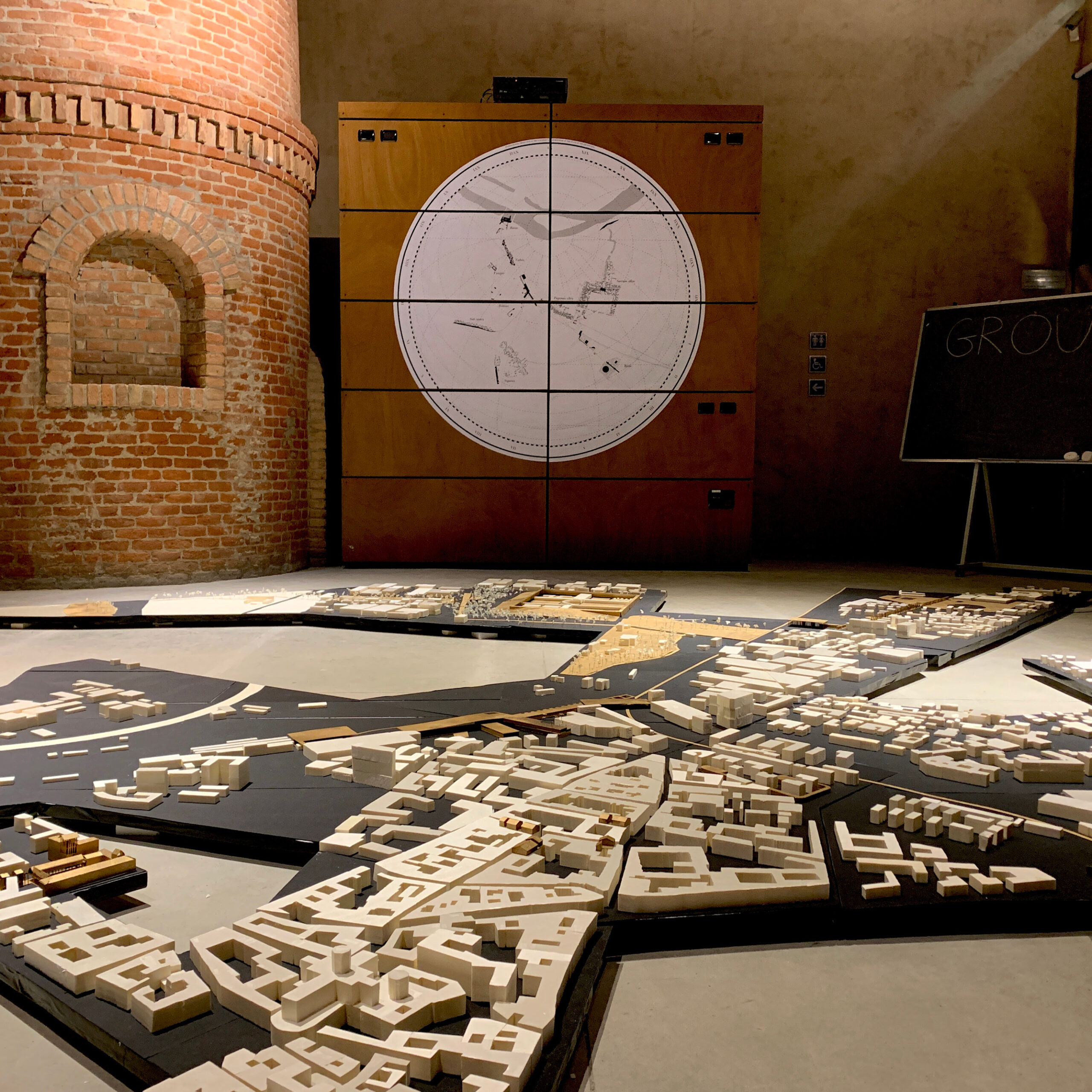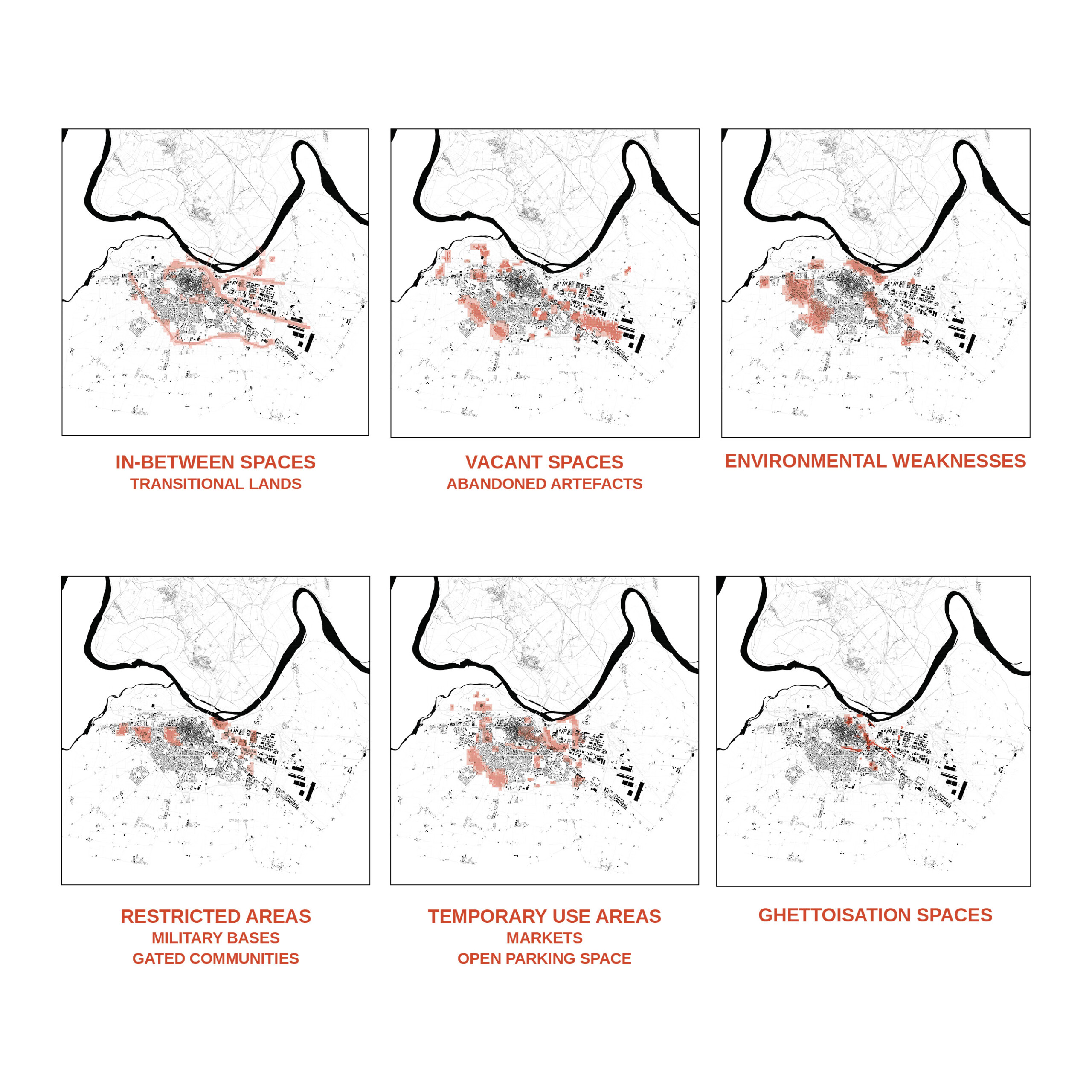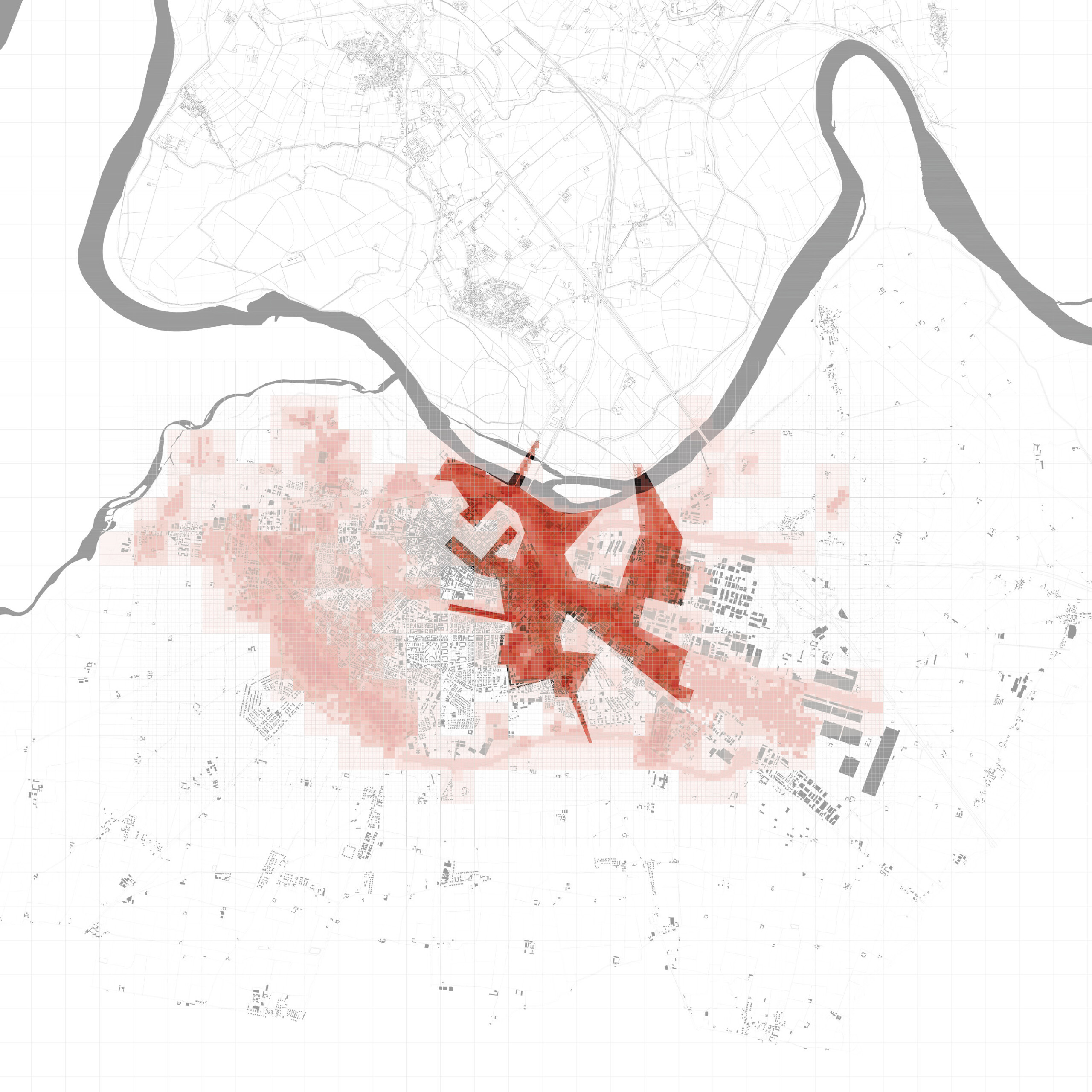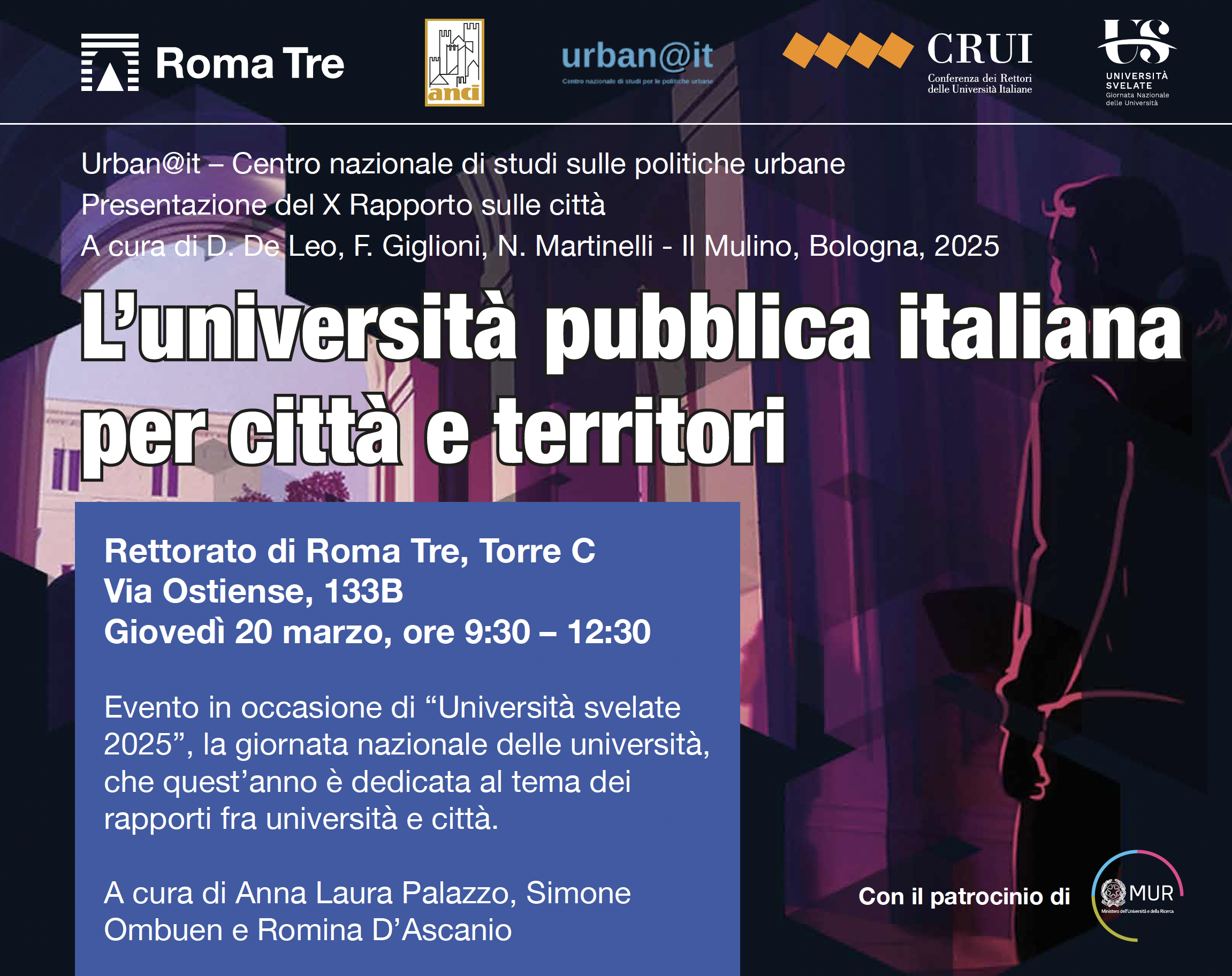NEBULAE. CLUSTERS OF NEW PERIPHERIES | Methodology

This essay represents the second in a series of five articles on the same topic.
“Nothing is more natural than the fact that simple bodies exist on a variety of globes in different proportions, causing discrepancies in density. Granted, the materials of a nebula must find their respective place on the surface of the planets according to the laws of gravity, but this arrangement does not prevent the simple bodies from coexisting within the whole of the nebula and then to order themselves in accordance to these laws. It is precisely the case in our system, and, as it appears, in the other stellar groups too.”
L-A. Blanqui, Eternity by the Stars, 1872
Abstract
The tenth edition of the Open City Summer School focuses on the theme of “New Peripheries.” This essay explores the concept of fragility within our environment and the necessity of a comprehensive redesign of our built surroundings. Emphasizing the interconnectedness between cities and the global ecosystem, it advocates for sustainable and socially viable design approaches. The essay underscores the importance of understanding and preserving the history and unique qualities of existing structures and landscapes while adapting to evolving contexts. It highlights the significance of envisioning positive solutions to address environmental challenges and transform fragilities into opportunities for innovation and resilience. Lastly, the essay emphasizes the potential of repurposing neglected spaces and revitalizing abandoned buildings for diverse activities. This research aligns with the objectives of the Open City Summer School in fostering innovative solutions for urban and environmental challenges. [1]
METHODOLOGY – New Peripheries as Fragile Landscapes: the rise of the Nebula
Taking into account some theoretical questions about the issue of “fragility” and the concept of “new peripheries”, we developed a methodology to investigate the city and the enlarged territory of Piacenza as an exemplary case-study of contemporary conditions. As other spatial and social topics, fragility seems to influence our environments modifying and often undermining apparently consolidated relationships. Fragility has often to do with inequality and marginality, though its use serves to acknowledge the rise of new spatial configurations and to understand concepts thus far scarcely developed but that are representative of the mutable nature of nowadays cities. Ambivalence, indefiniteness, coexistence, transience, and varying evolutionary temporalities, i.e., are states that communicate the contemporary idea of fragility, transferring its qualities into spaces. By applying the filter of fragility to the case of the “new peripheries”, the reasoning analyzed the widespread process of “peripheralization” triggered in the late 20th century and the spatial forms consequently derived from it. Different conceptualizations of periphery as a liminal space have occurred in those years: the notions of “conurbation”, “megalopolis”, “urban galaxy”, “galactic city” or “edge city”, to name a few, emerged requesting the development of new paradigms and tools for their exploration. [2]
In more recent times, the concept of periphery – namely, those zones placed in the outskirts of the city – has weakened due to a plural and arbitrary declination and to the consequent devaluation of its original meaning. Periphery has lost its figurative power also after the progressive fading of the meaning of “center”, its dialectical polarity which became ambiguous and incapable to fully grasp and interpret the relationship between architecture, city and landscape in the contemporary framework. From these considerations, the need of an alternative cataloguing emerged, since today periphery is no longer a matter of localization but it evolves into a spatial, social and economic condition shaped by recurrent phenomena such as migrations, social disconnections, economic imbalances, territorial vulnerabilities. It is mostly for this reason that, from a methodological point of view, our first action was to “criticize” the system of peripheries on which to operate with the project. Positioned all the way around the old Piacenza, in fact, the proposed suburbs identified a curtain of vast zones hinged between the radial urban expansions and the countryside towards the south. We aimed to reverse this approach by recognizing instead the heterogeneous and spread nature of nowadays peripheries, a different kind of space recognizable “everywhere” and originated by the overlapping of complex processes in continuous evolution.
The next action, therefore, was to detect the new peripheries in Piacenza with a technique mostly based on the field research. What appeared from the study were six categories of peripheries with variable degrees of intensity and density within the territory. (Fig. 1) In the first place, we distinguished the “in-between spaces”, namely those transitional lands constituted by temporary elements that together merge and divide different physical and social fabrics within the city. These areas are strictly connected with the “vacant spaces” that are abandoned, neglected and unoccupied urban spaces which show signs of less maintenance and vestige of razed buildings. Again, in the densest portions of the urban tissue, we detected the existence of many significant restricted areas”, ambits that have been delimited by physical barriers in order to limit the activities and the uses developed within them. From an environmental point of view, then, the presence of the Po river is a potentiality even if in many cases it could become one of the most critical “environmental weaknesses” since it is frequently subjected to floods and open to hydrogeological risk. The last two categories are mostly related to space uses: the “temporary-use areas” in which temporal social, cultural and commercial activities with interchangeable function can take place and the “ghettoization spaces” which are deep partitioned areas where the residents live involuntary caused by sprawling suburbs of a declining middle-class and immigrant quarters.

This process allowed us to define a system, a cluster of new peripheries closely overlapped and dependent on each other. Peripheries that are scattered throughout the city: they can be continuous and linked to the development of large movement infrastructures, concentrated in isolated places or, conversely, integrated in the ancient urban fabric. We named this cluster Nebula, using a cosmic-type narrative to characterize it. (Fig. 2)

Literally, a nebula is an interstellar cloud of dust and other chemical components, a “whole” – as Louis-Auguste Blanqui stated [3] – with which all the “simple bodies” coexist, interact and order themselves. The conception of the nebula is here employed as an analogy to delimit and represent our field of research and design. Its use is particularly effective: the cosmic speculation, in fact, works as a projection on which the image of the universe and its components are reflected becoming instruments of narration and interpretation. Blanqui’s book even provides a specific language with which, by carrying out a not so extreme transfer of meanings, it is possible to illustrate those special relationships that bond the simple bodies with the whole. “Attraction”, “radical separation”, “similarities”, “duplications” even “defeats” and “passions” are concepts – or better, “modes of existence” – able to describe the cosmos but also the idea of the city as an organism influenced by countless dynamics and shifting hierarchies. [4]
Following the analogy of the Nebula and its evocative imagery, a new urban geometry arose on which we based our design choices and outlined a set of strategies for the project.
[1] This essay is the result of the collaboration and of the dialogue between the Supervisors, the Tutors and students of Group 1 of the OC International Summer School held in POLIMI Piacenza Campus from the 27th August to the 12th September 2019. Students: Bian Yilin, Cai Luyang, Chern Li Yoong, Di Leo Jonathan, Duan Meijie, Fan Zixuan, Fang Siwei, Jiang Haoran, Jiang Lian, Jiang Xuetong, Kunhi Najamun Nisha Moideen, Li Xiaoya, Li Tong, Lin Yuqing, Lin Yang, Liu Min, Lu Feng, Luo Yixin, Pieri Marco, Pinardi Elena Maria, Rovilos Panagiotis, Sun Hanqiu, Wang Yawei, Wang Ren, Wang Mengwei, Wang Meng, Yan Yijia, Yang Jun, Zhao Yinian, Zhi Yining, Zhong Xiaotian, Zhu Yidie, Zhuang Hongyi
[2] Reference is to the ideas of “conurbation” theorized by Patrick Geddes in his book Cities in Evolution (1915), of “megalopolis” illustrated by the French geographer Jean Gottmann in 1990, of “urban galaxy” that Kevin Lynch investigated in the 1960s, of “galactic city” described by Lewis and of “edge city” that Joel Garreau used to narrate the America’s next urban frontier in the 1990s.
[3] Louis-Auguste Blanqui, Eternity by the Stars. An astronomical hypothesis. (New York – Berlin: Contra Mundum Press, 2013), 77.
[4] Ivi, p. 58, 82, 90, 136.






